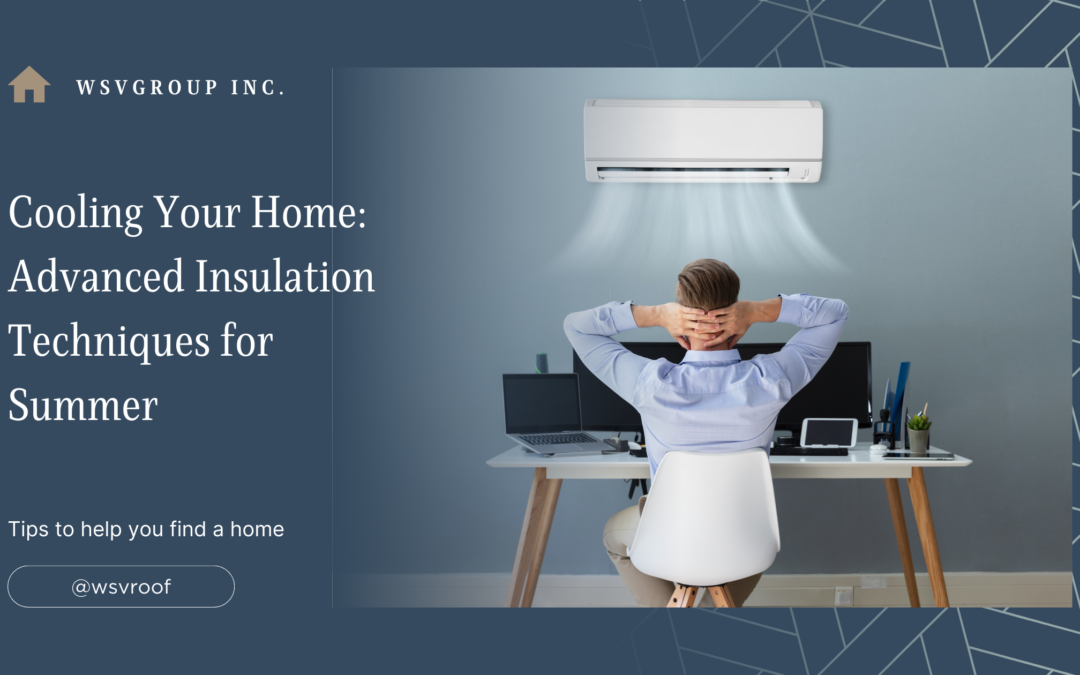As the summer sun blazes, keeping your home cool becomes a priority. Advanced insulation techniques not only enhance comfort but also reduce energy costs. Here’s how to optimize your home’s insulation for summer, ensuring a cooler living space without skyrocketing utility bills.
Why Insulation Matters in Summer
Insulation is often associated with keeping homes warm in winter, but it’s equally crucial for maintaining cool indoor temperatures during summer. Effective insulation minimizes heat transfer, keeping the cool air inside and the hot air outside.
Benefits of Advanced Insulation in Summer
- Energy Efficiency: Improved insulation reduces the need for constant air conditioning, leading to significant energy savings.
- Enhanced Comfort: Maintain a consistent indoor temperature, avoiding hot spots and improving overall comfort.
- Environmental Impact: Lower energy consumption reduces your carbon footprint, contributing to environmental conservation.
Top Advanced Insulation Techniques for Summer
1. Radiant Barrier Insulation
Radiant barriers reflect heat away from your home, making them an excellent choice for hot climates. These barriers are typically installed in the attic and can reduce cooling costs by up to 10%.
Installation Tips:
- Ensure proper ventilation to prevent moisture buildup.
- Combine with other insulation types for maximum effectiveness.
2. Spray Foam Insulation
Spray foam insulation expands upon application, filling gaps and sealing leaks. It provides superior thermal resistance compared to traditional insulation materials.
Benefits:
- Air tightness: Prevents air leaks and enhances energy efficiency.
- Moisture barrier: Reduces the risk of mold and mildew.
3. Reflective Roof Coatings
Reflective coatings applied to your roof can deflect sunlight, reducing heat absorption. This technique is particularly effective in homes with metal or flat roofs.
Advantages:
- Lower roof temperatures: Reduces the overall heat load on your home.
- Extended roof lifespan: Protects roofing materials from UV damage.
4. Insulated Concrete Forms (ICFs)
ICFs are hollow blocks or panels filled with concrete, providing excellent insulation properties. They offer high thermal mass, which helps in maintaining a stable indoor temperature.
Key Features:
- Durability: Highly resistant to extreme weather conditions.
- Soundproofing: Reduces noise infiltration for a quieter home.
Additional Tips for a Cooler Home
- Seal Windows and Doors: Use weather stripping and caulking to seal gaps and prevent air leaks.
- Upgrade Windows: Consider double-glazed or Low-E windows to improve thermal performance.
- Attic Ventilation: Ensure your attic is well-ventilated to expel hot air and reduce the cooling load.
Conclusion
Implementing advanced insulation techniques is a proactive step towards a cooler, more energy-efficient home during summer. By investing in methods like radiant barriers, spray foam, reflective roof coatings, and insulated concrete forms, you can significantly enhance indoor comfort and reduce energy costs.
FAQs
Q: How much can I save on energy bills with better insulation?
A: Effective insulation can save up to 15-20% on cooling costs, depending on the type and quality of insulation used.
Q: Is DIY insulation installation effective?
A: While DIY can be cost-effective, professional installation ensures optimal performance and longevity.
Q: How do I know if my home needs better insulation?
A: High energy bills, uneven temperatures, and drafts are indicators that your home may benefit from improved insulation.
For more expert tips on home cooling and energy efficiency, subscribe to our newsletter and stay updated with the latest in home improvement solutions.

